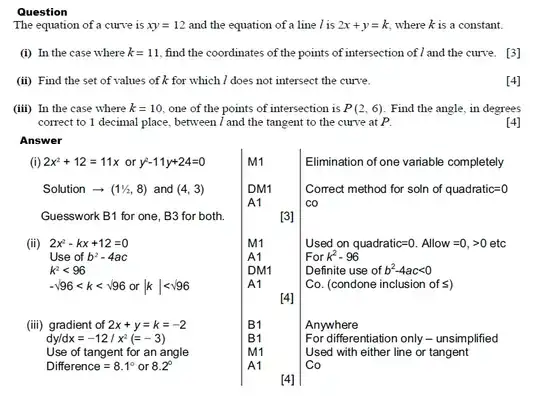The Problem
There are two straight lines with equations as follow
y=-2x+10 and y=-3x+6
their point of intersection is (2,6) and i am asked to find the angle between them ?
A detailed and easy explanation would be appriciated
Source and background
CIE/Cambridge International A and AS Level/Mathematics (9709)/Nov 2005 P1 Q9
(its part 3 i solved it a little before asking below is the whole question if needed)
